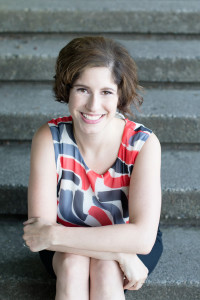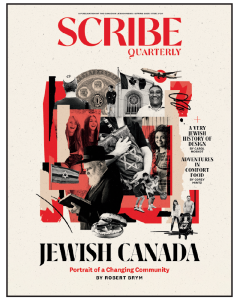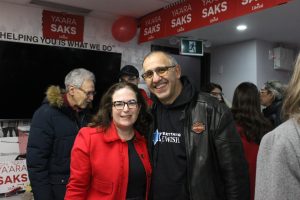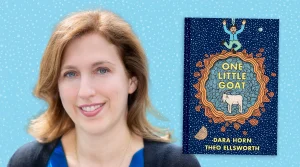While there is no shortage of writing on Holocaust survivors in Canada, Adara Goldberg’s Holocaust Survivors in Canada: Exclusion, Inclusion, Transformation, 1947-1955, published this fall by University of Manitoba Press, explores a specific period that Goldberg says scholarship on the subject has tended to skip over.
Holocaust Survivors is based on research that Goldberg, a native Torontonian and currently the education director at the Vancouver Holocaust Education Centre, conducted for her PhD dissertation at Clark University’s Strassler Center for Holocaust and Genocide Studies.
It examines the first-hand immigration, resettlement and integration experiences of the roughly 35,000 survivors who came to Canada in the decade after World War II.
Though books like Irving Abella and Harold Troper’s None Is Too Many famously address Canada’s immigration policy toward Jewish refugees during and after the Holocaust, Goldberg’s book is unique insofar as it highlights, in her words, “the ordinary and day-to-day struggles of survivor integration, not from a legal perspective, but from the perspectives of the individuals themselves.”

Further, Goldberg said the time in question is often overlooked, because “people have been so obsessed with hearing gruesome wartime stories and then looking at the lives that were ultimately built [after the trauma], but the period in between can seem mundane.”
She noted, however, that it’s an important period that “tells us how human beings cope with trauma and rebuild. It also tells us a lot about Canadian society at that time.”
Using archival materials such as case records from social service agencies and immigration files, as well as the oral histories of survivors and Jewish communal leaders from the period, Goldberg has created a window into the foundational experiences of Holocaust survivors in Canada, most of whom came from eastern Europe.
Having conducted some 125 interviews with survivors, their descendants, congregational leaders, scholars and former social service workers, she was able to illustrate the ways survivors navigated Canadian society and rebuilt their lives after immense trauma.
In their personal interviews with her, many survivors shared their reasons for choosing Canada as a site of new beginnings, the ways average Canadians responded to them upon their arrival and their efforts to build new lives despite, Goldberg said, “all odds being against them.”
While it’s known, she said, that the general Canadian public wasn’t particularly well disposed to Jewish refugees at the time, she sought to look at how the survivors were treated by local Jewish communities when they first arrived. The book’s focus ultimately became what Goldberg referred to as a “trifecta” of survivors, the Canadian Jewish community already in Canada, and the Jewish social service agencies that were charged with caring for the new Jewish arrivals.
Goldberg said her research revealed how much this unprecedented demand for refugee resettlement services was difficult for both the survivors and Jews who were already established in Canada.
While survivors’ integration experiences and initial encounters with local Jewish communities were generally a “mixed bag,” she said, most survivor accounts relate that the Canadian Jews’ reception of them was fairly ambivalent or cold.
This wasn’t because the Canadian Jews were “cruel or ill-intentioned” stressed Goldberg, whose own grandparents were all born in Canada, her great-grandparents having come from eastern Europe, but was reflective of the moment in history. “People didn’t know about post-traumatic stress disorder then, and the Holocaust, as much as Canadian Jews knew about it, was probably impossible to comprehend,” she said.
Goldberg emphasized that she makes no judgment about Jews who were already living in Canada. “These early interactions were so strained by language, culture, worldview, different experiences. It takes a long time for any group to overcome these things,” she said.
Goldberg will be speaking about her book at Beth David B’nai Israel Beth Am Synagogue on Nov. 5 at 7:30 p.m.






